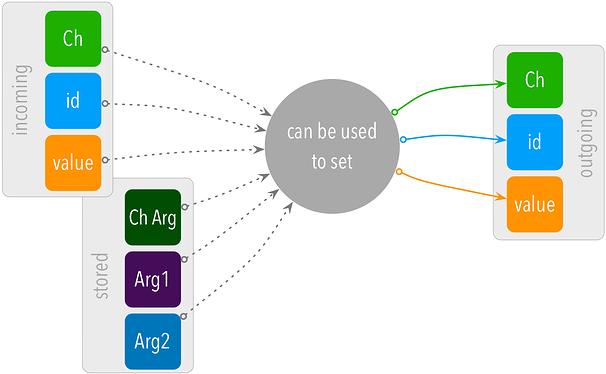the ‘Settings’ section of Transform
A message-type can carry up to 3 pieces of information with it.
For the message-types we use quite often, I use a shorthand of the ‘id’ and ‘value’ of the message (in addition to the Channel)…
…that tells me the ‘What’, ‘Where’, ‘Which’ and ‘How Much’ of certain MIDI events
for example
| (type | & Channel) | ‘id’ | ‘value’ |
|---|---|---|---|
| Note On | Channel | Note Number | Velocity |
| Note Off | Channel | Note Number | Velocity |
| Control Change | Channel | CC Number | Value |
| Poly Aftertouch | Channel | Note Number | Pressure |
| Program Change | Channel | Program Number | n/a |
| ‘What’ | ‘Where’ | ‘Which’ | ‘How Much’ |
this is very much not standard language, but it helps me to think a little more generally about MIDI messages without using formal language
This informal language will be used in the Ranges section
As hinted at earlier, we have a choice of using the information carried by the incoming message and/or the values stored as “Argument” ![]() properties.
properties.
This gives us a lot of options…
…which might be a bit overwhelming at first, but soon becomes familiar.
We’ll work through some examples in the “Using Transform” tutorial
Bear in mind that the diagrams show that you’ll always be ignoring some of the data available to you:
- sometimes we might use none of the values stored in the “arguments”
- for some uses we might use all three!
![]() why this word “Argument”? see the note later
why this word “Argument”? see the note later
Most settings combinations in the diagrams above are straight swaps of numbers.
When Channel data is used for other settings –or vice versa– we need to do a little conversion.
We saw this in action in the animated examples
This is explained more here
